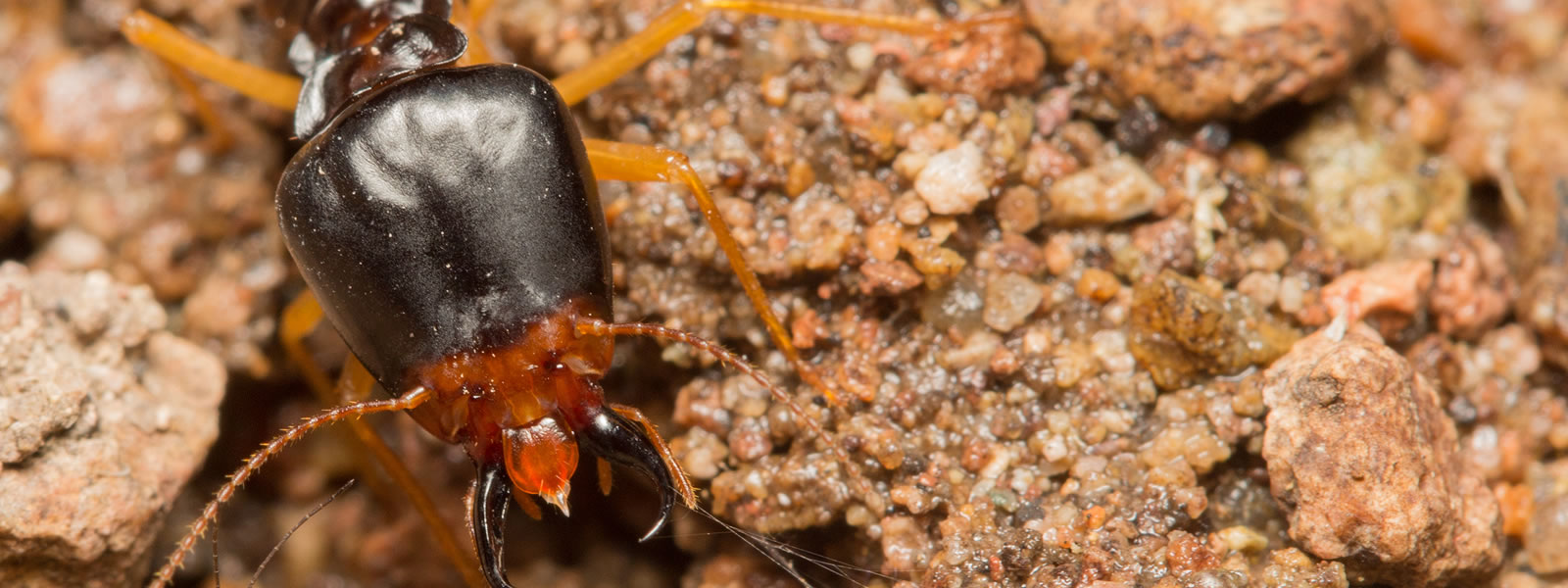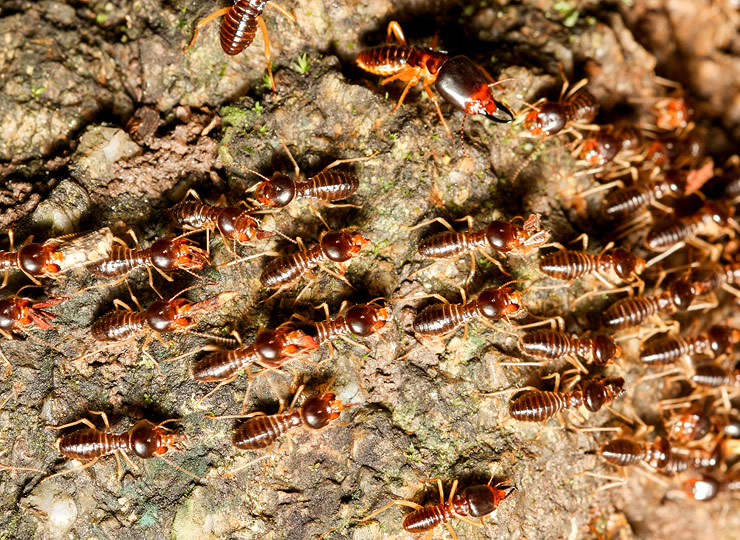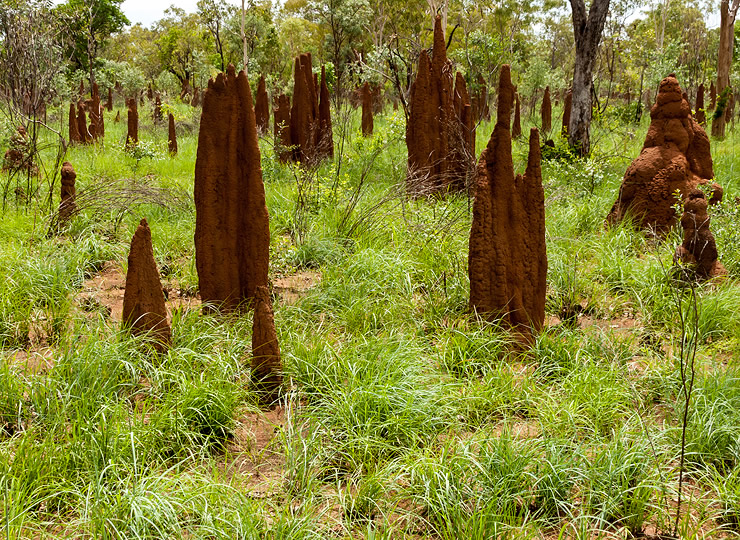Mound-Building Termite
Macrotermes species

Termites build massive natural structures that provide habitats for plants and animals. They can even reshape entire landscapes.
Range map of termites

Termites are a diverse group of insects. They, along with fungi and bacteria, typically eat dead plant material. Photo credit: iStock/Getty Images Plus
Termites are considered pests in some parts of the world. But these common insects play crucial roles in savannas ranging from Australia to Africa. For example, termites feed on dead plant material, which helps clean up habitats and cycle nutrients through ecosystems.
Mound-building termites are also ecosystem engineers: organisms that create, change, or maintain habitats. These termite species build large structures called termite mounds, which house huge colonies of termites. Some mounds are as high as 5 meters tall and extend deep underground.

Termite mounds in an Australian savanna. Mounds like these improve soil moisture and are hotspots for nutrient cycling. Photo credit: iStock/Getty Images Plus
Termite mounds are important for the health of savanna ecosystems. They improve soil properties, increase the availability of nutrients, and make it easier for water to move through the ground — all of which helps nearby plants grow.
Termite mounds enrich ecosystem productivity.
In addition, local animals use the mounds for a variety of purposes. Some use the mounds as lookouts, to either find prey or avoid predators. Others use the mounds as a source of food, eating the plants that grow on them and the termites themselves. Dozens of species also use abandoned mounds as new homes.